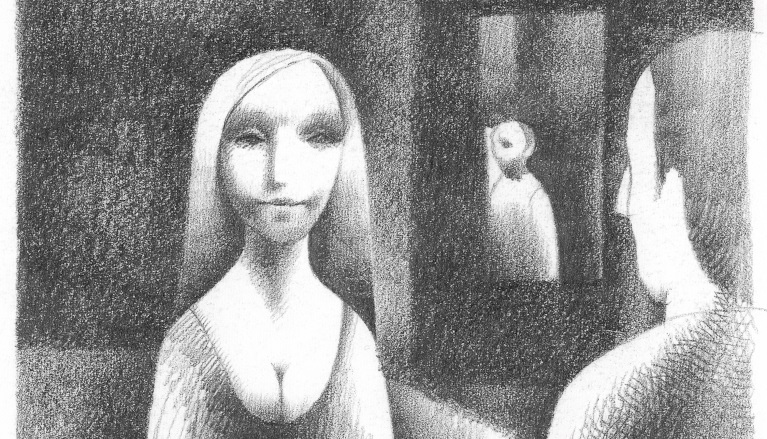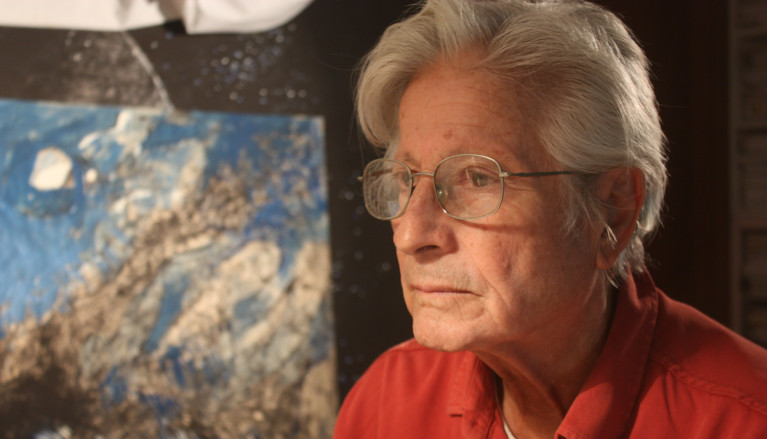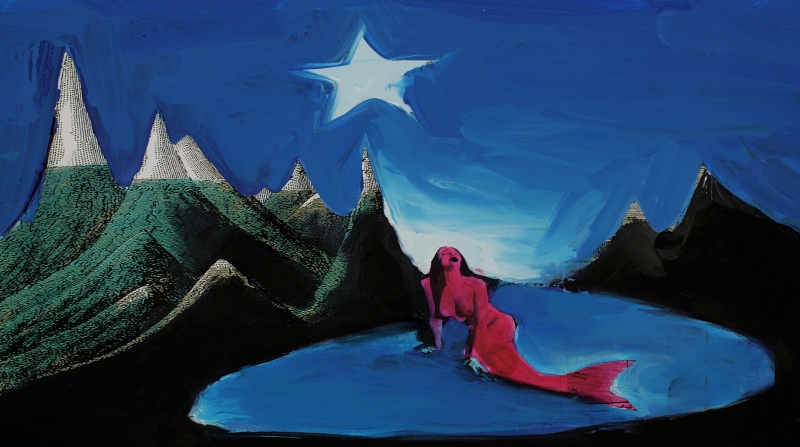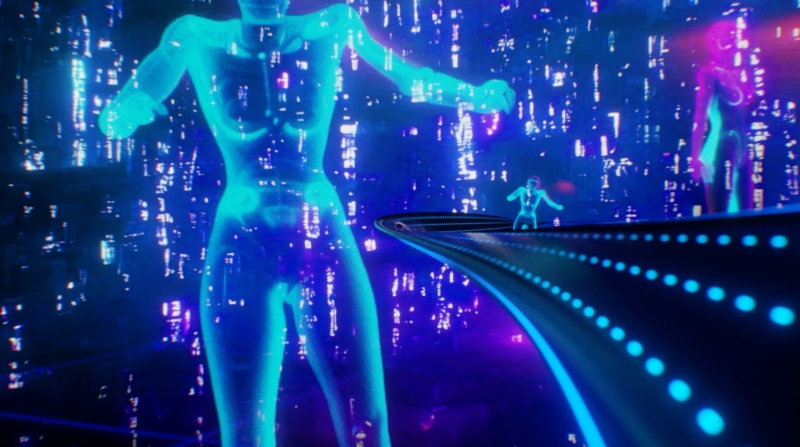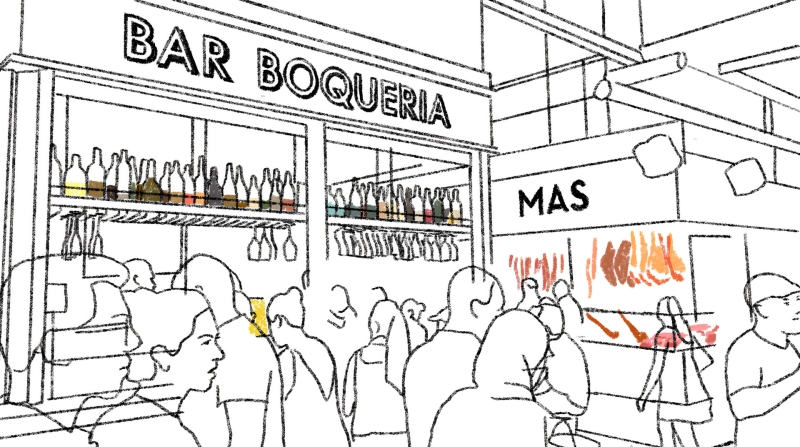K.O.
Regia: Manfredo Manfredi Fotografia: Elio Gagliardo Collaboratori: Franco Zambelli, Francesca Bolic, Paola Latrofa, Fausta D’Eufemia Musica: Sandro Brugnolini Produzione: Corona Cinematografica Durata: 11’ Origine: Italia, 1969, col. Tecnica: Cel Animation, ritaglio fotografico, riprese dal vero
The stream of consciousness of a depressed former boxer, now a peanuts vendor in the same stadium were he used to fight, who goes back on the days of his matches with bitter melancholy and gets ready to commit suicide.
Painting and animation are the expressive practices that distinguish Manfredo Manfredi's artistic career. In the late fifties, he worked as a painter and set designer for theatre and television. In the sixties and seventies, he made several animated shorts for Corona Cinematografica and Cineteam: some of open social denunciation inspired by news events, others more properly artistic, which led him with Dedalo to win the Ottawa animation film festival and receive an Oscar nomination. In the eighties, he mainly made TV specials, commercials, and TV opening themes. In the nineties, he returned to auteur short filmmaking tackling literary adaptations: Dante Alighieri’s Il canto XXVI dell’Inferno and Italo Calvino’s Le città invisibili. After years devoted entirely to painting, in 2018 he directed a new animated short: Lo spirito della notte.
Filmography
L’albero (co-directed by Guido Gomas), 1963
Ballata per un pezzo da novanta (co-directed by Guido Gomas), 1965
Terun, un treno dal sud (co-directed by Guido Gomas), 1966
Sonata per violino solo (co-directed by Guido Gomas), 1967
La spaccata (co-directed by Guido Gomas), 1967
Su sambene no est aba (co-directed by Guido Gomas), 1968
Rotocalco, 1969
K.O., 1969
Il muro, 1970
I lupi e gli agnelli, 1970
Sotterranea, 1971
La maschera della morte rossa (co-production Zagreb film – Corona Cinematografica), 1971
La gatta (co-production Zagreb film – Corona Cinematografica), 1973
Sotterranea, 1973
Uva salamanna, 1974
Nuvole, 1975
Immagini, 1976
Dedalo, 1976
Ten to survive, 1979
L’eroe dei due mondi (animated insert in the film of the same name directed by Guido Manuli), 1993
Canto XXVI° dell’Inferno di Dante, 1997
Le Città Invisibili, 1998
Il sogno di Aida (animated insert in the film of the same name directed by Guido Manuli), 2001
Lo spirito della notte, 2018
In the context of Italian animation, the cinema of Manfredo Manfredi represents one of the rare cases of fertile and long-lasting relationship between artist’s work and industrial film. By alternating films on commission with art-house projects, from the sixties onwards Manfredi has developed a substantial and varied production – composed of social shorts, artist’s films, TV opening themes, and commercials – and has been capable of working at the same time within the logic of the market and to construct a personal and innovative figurative poetics that is particularly keen on the pictorial dimension and the experimentation with several animation techniques.
Since his earliest works, the close relationship between painting and animation proved to be the most significant characteristic of his aesthetic research. After having made the famous opening theme of Carosello (1962), the well-known and extremely popular public TV daily magazine show for commercials, Manfredi co-directed with Guido Gomas a series of shorts of explicit social criticism for Corona Cinematografica. Those were inspired to mostly violent news stories with a strong regional connotation (from Sicily, Sardinia, the south of Italy) in which the civic and civil outcry seems a companion to the political commitment of masters of ‘direct cinema’ such as Francesco Rosi, Elio Petri, Damiano Damiani, and Giuliano Montaldo. Ballata per un pezzo da novanta (1965) is a good example of this early stage, as it bears witness to the fight against mafia by way of the story of Serafina Battaglia, i.e., the first woman who broke the omerta that protected Sicilian organized crime.
After interrupting the collaboration with Gomas, Manfredi began to work solo, and went past the intricate traditional animation pipeline, which requires the service of several assistants. His works of the late sixties-early seventies retain the interest in social themes but show a higher expressive freedom, whereby he manages to leave stricter narrative rules behind in favour of free-flowing visual associations, thus revealing the almost metaphysical, conceptual connotation of his research. In K.O. (1969), for example, the story is presented through the stream of consciousness of a former boxer who goes back on his matches with melancholic bitterness, while getting ready to commit suicide. The process of distancing from conventional narrative structures becomes more explicit in Rotocalco (1969), in which the diversity of themes – a characteristic of the illustrated news magazine format (“rotocalco” in Italian) – is exploited to create a blatantly pop film creating a stridently ironic digest of many references to the current affairs of the time. Sotterranea (1972), instead, pursues a critique of consumer society by telling the story of a man who, during a journey on the underground, escapes from the dehumanizing and claustrophobic daily routine through his reveries with a psychedelic style.
In 1976, Manfredi terminated his collaboration with Corona Cinematografica as well and became an associate of Cineteam. With them, he made Dedalo (1976), one of his most representative movies, that emblematically paves the way to a new phase and a fresh cinematic discourse. Composed of drawings on paper featuring stark chiaroscuro contrasts, the film expresses a metaphysical tension by way of a refined graphic balance and a dreamlike plot, which highlight the artistry and authorship of the project. By transforming the drawing straightforwardly in front of the camera, Manfredi creates a psychoanalytical labyrinth of recollections around the anguished visions elicited in a man by a window left ajar. Reminiscent of Antonioni, Dedalo aims to scan the ambiguity of things looking through their appearance but preserving the sense of mystery lying within every image: the fear of recognizing oneself and the desire of hiding in front of the others and of oneself.
The result of the same expressive tension, Immagini (1976) follows up on themes and styles found in Rotocalco but reworks them with a greater freedom of execution. The topical allusions, actually, lose their matter-of-factness and expand into a deeper reflection on the meaning of seeing and of creating images. Using both photographs and drawings that are processed by continuously erasing and recreating the figurative contours, a metamorphic structure is generated based on the train of free mental associations.
Dealing with the animated works made in the sixties and seventies by Manfredo Manfredi, this programme intends to testify to the journey of one of the Italian animation artists who were more perceptive of the social and cultural changes of his time. Manfredi’s animations now look like a mirror – at once opaque and reflecting, translucid and distorting – of rational and emotional outlooks, of references to culture, film, and painting that surface from depths of obscurity and are animated by mystery and the desire to keep on ‘breathing life’ into images.
The programme is part of the 2022 PRIN Call – Research Projects of Significant National Interest: The Golden Age of Italian Animation. From Economic Boom to the Years of Lead (1957-1977) – Università degli Studi Roma Tre, Accademia di Belle Arti di Roma.

TUTTE LE PROIEZIONI SONO GRATUITE

